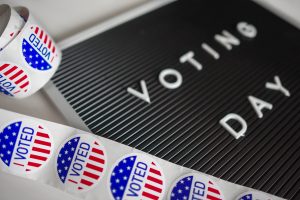By Alex Kaplan
The US-China Trade War has been an ongoing conflict consisting of “tit-for-tat” tariffs on a variety of goods. To put the conflict to rest, rounds of negotiations have been used as a consensus procedure to arrive at a new trade deal. The most recent indication of common ground was the announcement of a “phase one” deal on October 11, 2019. Analysts, however, have been hesitant to suggest that this agreement indicates the trade war is drawing to a close. Furthermore, uncertainty because of the phase one deal announcement has been met with modest market growth and even influenced the federal reserve to cut interest rates for the third time this year. Alas, negotiations hitherto have been generally unsuccessful for a number of reasons. Determining those reasons requires a holistic consideration of the ongoing hostility between the U.S. and China beyond the scope of merely trade-war related manifestations. Viewing the conflict from a lens of superpower competition offers a more valuable perspective in rationalizing and contextualizing the stringent manner the U.S. has regarded China and perhaps why a trade deal has not yet materialized.
Donald Trump has made it a point of focus in his presidency to get aggressive toward China. The popular narrative for justifying this behavior is to rebuke China’s unfair business practices related to technology transfer and intellectual property (IP) infringement that foreign companies hoping to access China’s burgeoning market space are speculated of being subject to. The U.S. wants a comprehensive trade deal that safeguards American economic and business interests suspected of being exploited by China. As such, the U.S. has insisted upon an enforcement mechanism that guarantees China’s full performance of the trade agreement. While the last 3 Sino-US IPR (intellectual property rights) trade agreements had no such contingency, the Trump Administration is making this a priority, so as to protect U.S. businesses who hope to infiltrate the Chinese market. Previously, violations of Sino-US trade agreements would be resolved through “re-negotiations.” The U.S. is instead attempting to implement a more aggressive enforcement mechanism, one that allows the U.S. to impose unilateral tariffs that can’t be counteracted by a tariff from China.
While it may be a virtuous task for the Trump administration to get tough on China for these unfair trade practices, evidence suggests that this may not be as significant a problem as the U.S. is implying by their actions. The Chinese government has implemented substantial reforms to its IP regime in response to accusations of unfair trade practices in which critics say that companies are forced to give up their proprietary technology to access the Chinese market. Forced technology transfers refers to when a foreign company wants to enter the Chinese market, they are often pressured to surrender its technology to Chinese companies usually through a joint venture agreement. The Chinese government has rejected such accusations. [1] Beijing has still taken measures to reform their investment regime to create a more fair, welcoming environment for foreigners hoping to do business in China. Such reforms have gone a long way in lowering market barriers for foreign firms to enter the domestic market. Foreign investors under the “new foreign investment law” can set up ventures in which they have full ownership, instead of being forced into joint ventures agreements with locals. [2] This law protects the intellectual property rights of foreign investors and prohibits forced technology transfers through key clauses like prohibiting local governments from requesting technology transfers in exchange for access to local business. [2]
Another momentous reform China has made is the establishment of a new national appellate IP court. Chinese IP courts were first set up in 2014 in Beijing, Shanghai, and Guangzhou and the Beijing IP court in 2015. IP plaintiffs had a 63-0 win rate. [3] Recent changes have been made to this system with the introduction of an appellate IP Court that functions akin to the US Court of Appeals for the Federal Circuit with national jurisdiction over civil IP appeals. [3] Foreigners have had great success in winning cases in this court and this can to some extent be attributed to the judges themselves who are purposefully well experienced in handling patent and technology-heavy cases. [4] These are just some of many reforms China has pushed through at the behest of the US amid the trade war. While there are still enforcement concerns, China is taking the concerns of the US seriously and acting accordingly however trade talks are still moving sluggishly. The underlying issue underpinning the hostile political environment is greater than IP infringement and technology transfers. While still relevant factors, these are exploited subfactors of a larger ongoing play to mitigate Chinese growth.
Further evidence is found in what was agreed upon in the phase one deal. Included in the deal being finalized are commitments by China to prohibit state-backed Chinese theft of American intellectual property. However, these are largely actions China has taken already. Their new IP and foreign investment laws and IP courts address the very issue. [5] This naturally begs the question: why is the U.S. fixated on hampering Chinese growth and how that has translated to the negotiating table? The nature and timing of the trade war alludes to a larger story foregrounding trade talks. Examining the situation should favor a broader scope of what is at stake in these negotiations. Looking at the trade war as another development in the trajectory of an US-China competition resulting from the militarization of trade policy rather than a single isolated geoeconomic development due to unfair trade practices offers insights into the geopolitical magnitude of these negotiations. The trade talks are emblematic of the two 21st century superpowers squaring off against one another. As such, the trade war is being guided by principles of national security and prestige which should naturally encourage a thorough negotiation period. It is the great existential threat that China constitutes as a challenge to U.S. superpower supremacy that has created the tense ongoing political moment among the great powers today; this has caused the stark alteration in historical negotiation patterns between the U.S. and China. The U.S. is treating these trade talks as a way to counter China’s rapid technological and economic growth. There is a new global political order where the U.S. is challenged as the sole global hegemon. The conflict goes beyond unfair trade practices but is rather a way to put a check on China’s growth.
There is no question that China, over the last few decades, has transformed itself into an economic and technological powerhouse. A transformative moment that laid the foundation for the substantial growth in China’s global economic performance today was Deng Xiaping’s “Cat Theory” which reads: “It doesn’t matter if a cat is black or white; as long as it catches mice, it’s a good cat.” In essence, the “black cat” and “white cat” stands for “planned economy” and “market economy” respectively, and Deng was saying that whichever one gets the job done will be adopted. President Xi Jinping has echoed this call in his “two birds theory.”[6] At the 12th NPC standing committee meeting, President Xi Jinping laid out his plan for a radical change to the structure of the Chinese economy as a means to achieve national rejuvenation saying, “clean up the cage and change the bird within, so that phoenix can transform anew.” [6]
A number of wide-scale projects have been announced by Beijing in this vein which encapsulates China’s fierce developmental ambitions. Namely, Made in China 2025, Belt and Road Initiative, and what the U.S. State Department calls a “military-civil fusion” strategy to break down barriers between the civilian sector and its military industrial base to achieve economic development and military modernization. These massive undertakings have set the stage for China’s heavy “next-gen tech” pursuit, drawing with it heavy concern from the U.S. [7]
Many in America, including Donald Trump, hold that China’s rise in technological prowess poses a threat to the United States and challenges its status as the global hegemon. [8] The U.S. sees China as leveraging technology to move itself closer to the world’s center stage. [9] They have accused China of using government subsidies, mobilizing state-owned enterprises, and implementing forced technology transfer to achieve its ambitious 2025 plan. [10] For example, China’s push for an advanced biopharma sector, which entails heavy investment into US companies working with sensitive technologies at the encouragement of the Chinese government, directly falls in line with the Made in China 2025 plan. [11] The effects of which have comprised America’s competitive position in this key innovative-based industry. These tactics undermine China’s commitment to international trade rules and pose a legitimate security threat. [11] Before the trade war, the U.S., recognizing China’s development, implemented policies to hamper said growth. [12] A central point of concern was to try and bolster oversight on foreign investment into the U.S. While not intended to just target China, the Committee on Foreign Investment in the United States (CFIUS) has long been viewed as a serious way for Washington to scrutinize potential Chinese investors in U.S. businesses. CFIUS subjects any foreign investment which is more than 5% of the businesses involved in areas working with “critical” technology, sensitive data gathering on U.S. citizens, and transactions in which a foreign government has a direct or indirect interest to review. FIRRMA defines “critical technologies” to include “emerging technologies that could be essential for maintaining or increasing the technological advantage of the United States over countries of special concern with respect to national defense, intelligence, or other areas of national security, or gaining such an advantage over such countries in areas where such an advantage may not currently exist.” [13] The rhetoric used to describe the rationale for such policies illustrates how the U.S. sees China’s development as a direct threat to their national interests. [14] The impetus for FIRRMA was based on concerns that “the national security landscape has shifted in recent years, and so has the nature of the investments that pose the greatest potential risk to national security. As a way to advance their own national industry, China has focused on getting their hands on as many key technologies as they can. This directly concerns the US from a national security perspective as some of the top technologies are developed in the US, namely Silicon Valley. [15] For example, CFIUS forced Beijing Kunlun Tech to divest its 60% equity of the app “Grindr” due to national security concerns about data collection related to geolocation, sexual preference, and HIV status on its users. [16] On the surface this may seem overactive but when considering the investment from a national security perspective under the auspices of China’s rapid economic acceleration it is a cause for concern.
On top of CFIUS, Donald Trump implemented the Foreign Investment Risk Review Modernization Act of 2018 (FIRRMA). Metaphorically, FIRRMA was a way of putting CFIUS on steroids. Intended to expand the types of transactions subject to national security review by CFIUS, FIRRMA has acted as a vehicle for the cultivation of a stricter investment regime to monitor and even block Chinese investors from pouring money into U.S. companies involved with next-gen technologies. Experts have suggested that the “broad” changes under FIRRMA could potentially lead CFIUS to take a more assertive role that emphasizes both U.S. economic and national security interests, particularly pertaining to the development of emerging or leading-edge technology. Rhodium Group predicted that up to 75% of Chinese venture investments would be subject to CFIUS review under the new rules. These investors, many of which are influenced if not outright controlled by the Chinese government, would likely find it impossible to get approval for an investment in U.S. companies building sensitive technology due to national security concerns. [16] Notable transactions that were blocked due to FIRRMA include China’s ENN Ecological Holdings Company to withdraw from a deal to purchase Toshiba’s U.S. liquefied natural gas business due to CFIUS approval concerns. [17] Also, CFIUS ruled that PatientsLikeMe, a health platform that collects sensitive data, had to divest the majority stake taken by iCarbonX, a Chinese company. [18]
CFIUS has blocked deals even before the trade war.: “since its inception in 1975, CFIUS has confronted shifting concepts of national security and a changing global economic order that is marked by the rise of such emerging economies as China and state-led firms that are playing a more active role in the global economy.” [18] This quote from the Congressional Research Service, a public policy research institute of the United States Congress, demonstrates how the rise of China is of direct concern for the U.S. One reason the U.S. has gone after foreign direct investments is due to the sensitive nature of what these investors are actually funding, all related to crucial technologies that China wants to be able to develop domestically so as to further their own development projects. These technologies include artificial intelligence, data analytics and cyber security. According to the Rhodium Group, roughly 40 percent of the Chinese VC deals in 2018 went to biotechnology and pharmaceutical companies. “Chinese companies are hungry for new tech so they can bring more advanced drugs to the country’s population, and the Chinese government is supporting that effort.” The national security threat that this poses has logical reasoning. Last year, two Chinese scientists pled guilty to stealing intellectual property from GlaxoSmithKline. [19] Those trade secrets were going to be part of the foundation for setting up a company in China called Renopharma. It is apparent that China is aggressively pursuing US technologies so as to further their own interests which threatens the US position as a global innovator. [20]
Having already alluded to this, it is apparent that Washington’s aggressive stance on China has impacted a number of stakeholders. Primarily, Chinese investors and the US private sector. A lot of US startups rely on early stage funding from VCs from China. However, in surveying the current economic environment, it is apparent that hostile relations between the U.S. and China have had an adverse effect on the ability for Chinese investors and U.S. companies to close deals. A number of Trump administration policies aimed at curbing China’s access to American innovation have caused “Chinese investment in U.S. tech startups to have all but halted, as both investors and startup founders abandon deals amid scrutiny from Washington.” [17] FIRRMA in particular poses a threat to a wide range of innovative industries by adding increased governmental scrutiny that may restrict the funding needed by entrepreneurs hoping to build next-gen technologies The decline in investment in the industries covered by FIRRMA includes many industries at the forefront of intellectual property (IP) licensing activity like: Semiconductor, Aerospace, BioTech, Wireless Communication Equipment and Nanotechnology. Without limited places where their money is accepted, Chinese investors may look to other parts of the world where investments are welcomed. Research from the Rhodium Group illustrates how the CFIUS and FIRRMA have contributed to the decline in Chinese investment over the last year. Foreign direct investment (FDI) from China plunged 90% from $46 billion in 2016 to $5 billion in 2018. Specifically, health, pharma and biotech were popular sectors for Chinese VC investment in the U.S. in 2018 with $1.5bn invested. Overall, about 40% of the Chinese VC deals in 2018 went to biotechnology and pharmaceutical companies. [17] Recently, however, CFIUS has ramped up its scrutiny in biotech and pharma investments citing national security concerns associated with these developing, high-tech industries as they become entangled with emerging technologies.
U.S. companies, especially startups, who often seek early seed money from Chinese investors may find their businesses affected in a number of ways. By rejecting Chinese investment, U.S. startups are aware that overseas expansion can be more difficult. U.S. startups may struggle raising funds and accessing the China market. [17] Increased power of CFIUS “restricts investments in companies working with more sensitive technologies and adds red tape that makes foreign investment less attractive to U.S. startups.” [19] As a result, a number of Chinese companies have begun to steer clear of U.S. companies. Chinese conglomerate Fosun International now is avoiding U.S. investments in sensitive industries because of a “less-friendly environment,” said Mike Xu, MD of its Fosun Capital unit. [19]
The US’s stance on China is not simply a trade war development. The US is wagering the trade war to contain China’s superpower growth. The US is standing off against China as a superpower going up against their 21st century counterpart. The trade war should not be looked at as an isolated incident but instead as a “next step” in superpower supremacy competition. In considering potential solutions to bridge the gap, it has been proposed that the World Trade Organization (WTO) could play a heightened role in ensuring the trade agreement is enforced. However, recent scholarly work points to the limited role that the WTO could play in facilitating talks in this sense. The US was in violation of its WTO commitments by invoking a 301 investigation against China rendering the trade agreement as unenforceable by the WTO. It is also difficult for the US to win a case against China for inadequate IP protection directly at the WTO. [9] As such, the trade agreement is largely above the law. Without a third party, it makes these trade talks, given their sensitive nature and potency for geopolitical consequences, that much more difficult to reach an agreement.
Works Cited
- Cai, Jane, and Keegan Elmer. “Is the US Right to Cry Foul about Forced Technology Transfer in China?” South China Morning Post, 14 January 2019, https://www.scmp.com/news/china/diplomacy/article/2181528/us-right-cry-foul-about-forced-technology-transfer-d o-business.
- Wang, Orange. “China to Make Forced Technology Transfer Illegal to Woo Foreign Investors.” South China Morning Post, 7 March 2019, https://www.scmp.com/economy/china-economy/article/2188885/china-make-forced-technology-transfer-illegal-bei jing-tries.
- “The Beijing IP Court Gave Foreign IP Plaintiffs a Perfect 63-0 Win Rate in 2015, Reports One of Its Judges.” RSS, https://www.iam-media.com/frandseps/beijing-ip-court-gave-foreign-ip-plaintiffs-perfect-65-0-win-rate-2015-report s-one.
- Zhang, Hui, Junkun Zheng, James Yang, Sam Jones, and Philipp Widera. “China Is to Establish a National IP Appellate Court.” Kluwer Patent Blog, 21 December 2018, http://patentblog.kluweriplaw.com/2018/12/21/china-is-to-establish-a-national-ip-appellate-court/.
- Donnan, Shawn. “What’s In (and Not In) Step One of the U.S.-China Trade Deal.” Bloomberg, 28 October 2019, https://www.bloomberg.com/amp/news/articles/2019-10-28/trade-war-latest-trump-china-apec-economy-tariffs?__t witter_impression=true.
- Myllyvirta, Lauri, Lauri Myllyvirta, and Lauri Myllyvirta. “Rising from Phoenix Ashes, a China Transformed by Renewable Energy?” Unearthed, 29 August 2017, https://unearthed.greenpeace.org/2015/08/27/rising-from-phoenix-ashes-a-china-transformed-by-renewable-energy/.
- O’Keeffe, Kate, and Jeremy Page. “China Taps Its Private Sector to Boost Its Military, Raising Alarms.” The Wall Street Journal, 25 September 2019, https://www.wsj.com/articles/china-taps-its-private-sector-to-boost-its-military-raising-alarms-11569403806.
- Navarro, Peter. “Trump’s Tariffs Are a Defense Against China’s Aggression.” The Wall Street Journal, 20 June 2018, https://www.wsj.com/articles/trumps-tarif
- Zhang, Angela. “The US-China Trade Negotiation: A Contract Theory Perspective”
- Cyrill, Melissa. What Is Made in China 2025 and Why Has It Made the World So Nervous, CHINA BRIEFING, 28 December 2018, https://www.china-briefing.com/news/made-in-china-2025-explained/
- Atkinson, Robert D. “China’s Biopharmaceutical Strategy: Challenge or Complement to U.S. Industry Competitiveness?” Information Technology and Innovation Foundation, 12 August 2019, https://itif.org/publications/2019/08/12/chinas-biopharmaceutical-strategy-challenge-or-complement-us-industry.
- McBridge, James & Chatzky, Andrew. “Is “Made in China 2025” A Threat to Global Trade?” COUNCIL ON FOREIGN RELATIONS, 13 May 2019, https://www.cfr.org/backgrounder/made-china-2025-threat-global-trade
- “Congressional Research Service”. The Committee on Foreign Investment in the United States (CFIUS), 23 October 2019, https://fas.org/sgp/crs/natsec/RL33388.pdf.
- Adams, Ama A., Brendan C. Hanifin, and Emerson Siegle. “Congress Passes Landmark CFIUS Reform Bill.” Lexology, 6 August 2018, https://www.lexology.com/library/detail.aspx?g=25106240-da0e-4cb3-bff5-4c757d7ec8e3.
- “Is the US Right to Cry Foul about Forced Technology Transfer in China?” South China Morning Post, 14 January 2019, https://www.scmp.com/news/china/diplomacy/article/2181528/us-right-cry-foul-about-forced-technology-transfer-d o-business.
- Finley, K. “US Is Forcing a Chinese Firm to Sell Gay Dating App Grindr.” Wired, 27 March 2019, https://www.wired.com/story/us-forcing-chinese-firm-sell-gay-dating-app-grindr/.
- Somerville, H. “Chinese tech investors flee Silicon Valley as Trump tightens scrutiny.” 7 January 2019, https://www.reuters.com/article/us-venture-china-regulation-insight/chinese-tech-investors-flee-silicon-valley-as-trump-tightens- scrutiny-idUSKCN1P10CB.
- “China’s ENN to scrap deal for Toshiba’s U.S. LNG business.” 11 April 2019, https://www.reuters.com/article/us-toshiba-lng-sale/chinas-enn-to-scrap-deal-for-toshibas-u-s-lng-business-idUSKCN1RN1R4.
- Hancock, T. “China biotech groups spend billions on overseas drug candidates.” 24 June 2019, https://www.ft.com/content/869a918c-9185-11e9-aea1-2b1d33ac3271.
- Keown, A. “Chinese Company Slows Down Investment in U.S. Biotech Sector Due to Trade Issues” 31 May 2019, https://www.biospace.com/article/chinese-company-slows-down-investment-in-u-s-biotech-sector-due-to-trade-issues/.






Be First to Comment